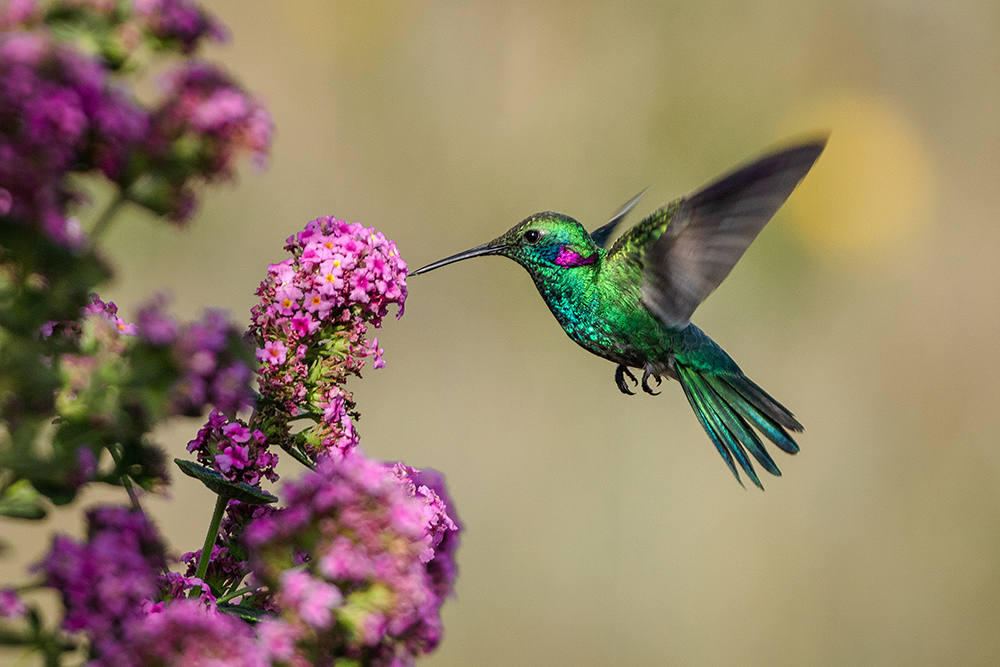
Fall Hummingbird Migration Has Begun in Eldridge: How to Spot, Support, and Enjoy These Tiny Travelers
As summer winds down and the mornings turn crisp, a special seasonal migration quietly unfolds across the skies of Eldridge. Tiny yet fierce, hummingbirds are beginning their incredible fall journey south—and Greater Houston is right along their route.
From late July through October, most notably during August and September, species like the ruby-throated and rufous hummingbirds pass through our area on their way to warmer wintering grounds in Central America and Mexico. For residents who know when and how to look, this migration brings a front-row seat to one of nature’s most inspiring spectacles.
Who’s Humming Through Houston?
The most commonly spotted hummingbird in the Houston area is the ruby-throated hummingbird—a tiny, emerald-green bird with an iridescent red throat on the males. Females lack the red coloring but share the same shimmering green back and petite stature.
Other species like the black-chinned hummingbird and rufous hummingbird are also seen in smaller numbers, particularly during the cooler months. All of these species exhibit incredible agility, with wings that beat up to 80 times per second and flight patterns that include hovering, darting, and even flying backward.
How to Spot and Enjoy Them
You don’t have to venture far to enjoy hummingbirds in Eldridge. These birds are naturally attracted to:
-
Brightly colored tubular flowers, such as Turk’s cap, trumpet creeper, coral honeysuckle, bee balm, and salvia.
-
Open, sunny spaces with nearby shelter, like bushes or trees, for resting and nesting.
-
Feeders filled with nectar—especially during peak migration windows when natural sources may be limited.
Early mornings and late afternoons are ideal for hummingbird watching. Sit quietly near a blooming flower patch or feeder and watch for their zippy silhouettes and high-pitched wing sounds.
Mobile Sidebar Ad
What Hummingbirds Eat—and How to Help
Hummingbirds rely on high-energy food sources to fuel their migration. Their primary diet includes:
- Nectar from flowers, which provides sugar-rich energy.
- Small insects and spiders, which offer vital protein—especially for growing juveniles.
To support hummingbirds in your yard or garden, you can:
1. Plant Native Blooms
Include nectar-rich native plants like:
- Turk’s cap
- Cardinal flower
- Coral honeysuckle
- Salvia
- Bee balm
Avoid pesticides that can contaminate these food sources.
2. Offer Homemade Nectar
Keep it simple and safe:
-
Mix 1 part white granulated sugar with 4 parts water
-
Boil, cool, and fill feeders
-
Never use red dye, honey, brown sugar, or artificial sweeteners
-
Clean feeders every 2–3 days (more often in hot weather) to prevent mold or bacteria that can harm birds.
3. Provide Fresh Water
Although they don’t bathe in feeders, hummingbirds enjoy misting and shallow water features. A gentle mister or fountain can help them stay cool and clean.
A Shared Moment in the Skies
It’s easy to miss the hummingbird migration if you’re not looking for it—but once you notice it, it becomes a treasured annual event. In neighborhoods across Eldridge, families are hanging feeders, planting red blooms, and watching from porches with binoculars in hand.
By making small, simple choices—like planting native flowers or mixing up a fresh batch of sugar water—residents become part of a larger cycle that helps hummingbirds complete their astonishing journey.
When to Take Down Your Feeders
A common myth is that feeders should be taken down early to “force” hummingbirds to migrate. In reality, hummingbirds leave based on instinct and daylight—not feeder availability.
Keep your feeder up until at least three weeks after your last sighting, just in case late stragglers come through needing fuel for the road.
Where to Learn More
The Houston Audubon Society offers excellent resources on hummingbird migration, behavior, and conservation efforts. Their website includes native plant guides, birding locations, and seasonal tips to help residents become hummingbird allies year-round.
As this season’s migration peaks, now is the perfect time to slow down and look up. With feeders filled, flowers blooming, and eyes to the sky, Eldridge is ready to welcome these winged wonders—and send them on their way.
 Tiffany Krenek has been on the My Neighborhood News team since August 2021. She is passionate about curating and sharing content that enriches the lives of our readers in a personal, meaningful way. A loving mother and wife, Tiffany and her family live in the West Houston/Cypress region.
Tiffany Krenek has been on the My Neighborhood News team since August 2021. She is passionate about curating and sharing content that enriches the lives of our readers in a personal, meaningful way. A loving mother and wife, Tiffany and her family live in the West Houston/Cypress region.




